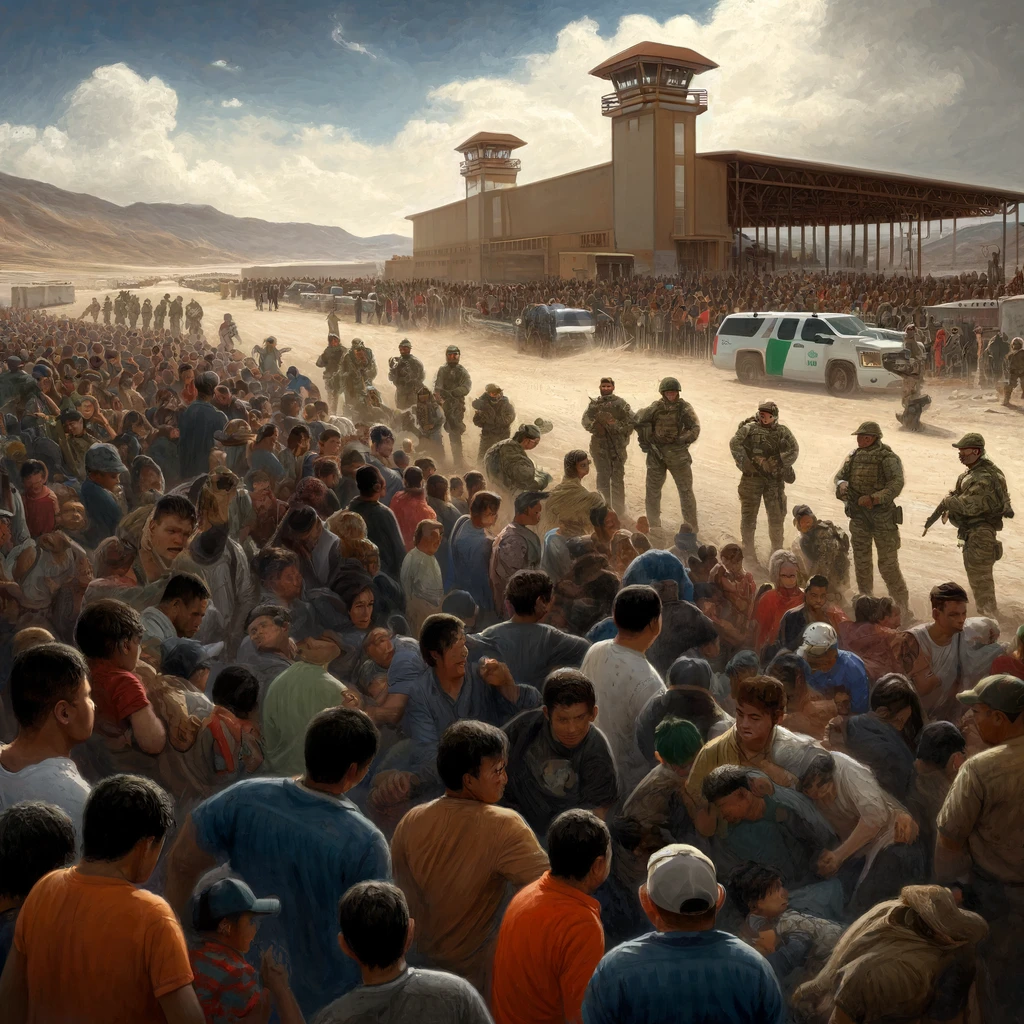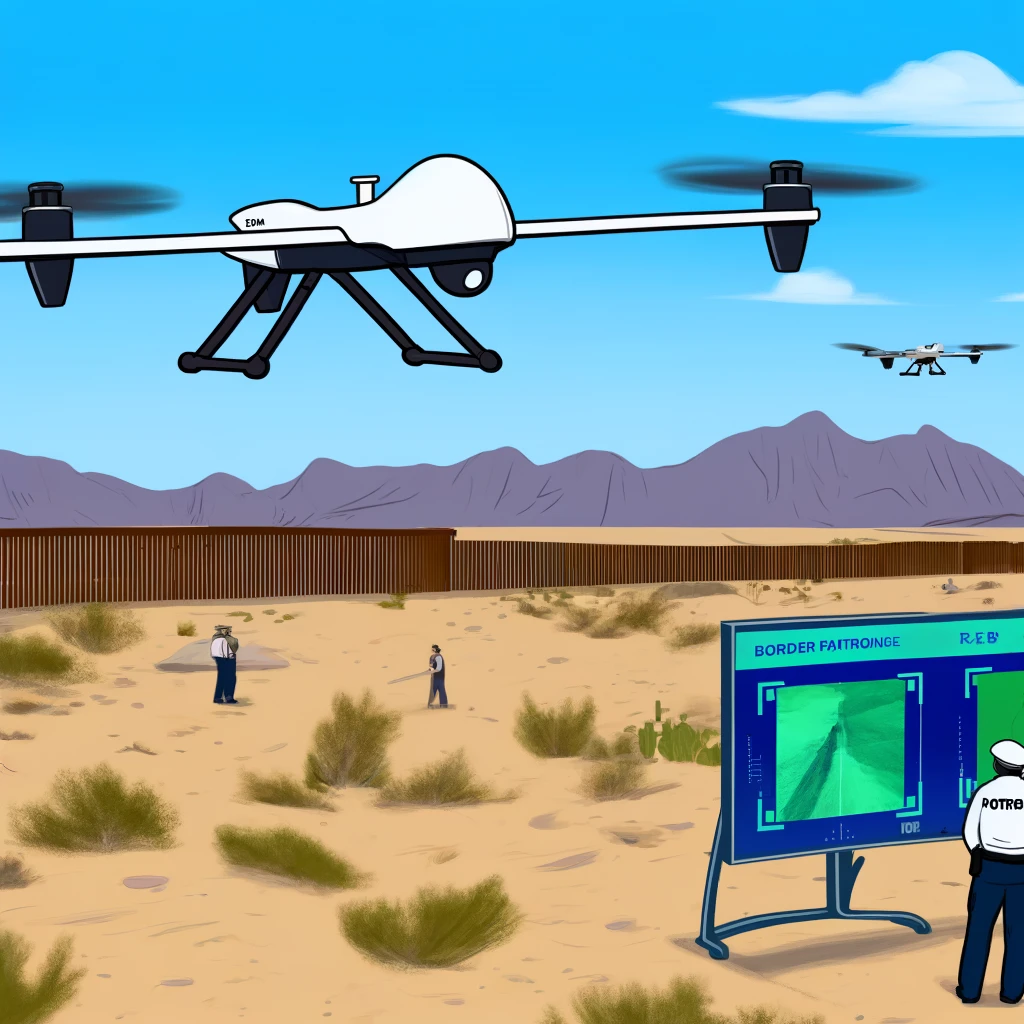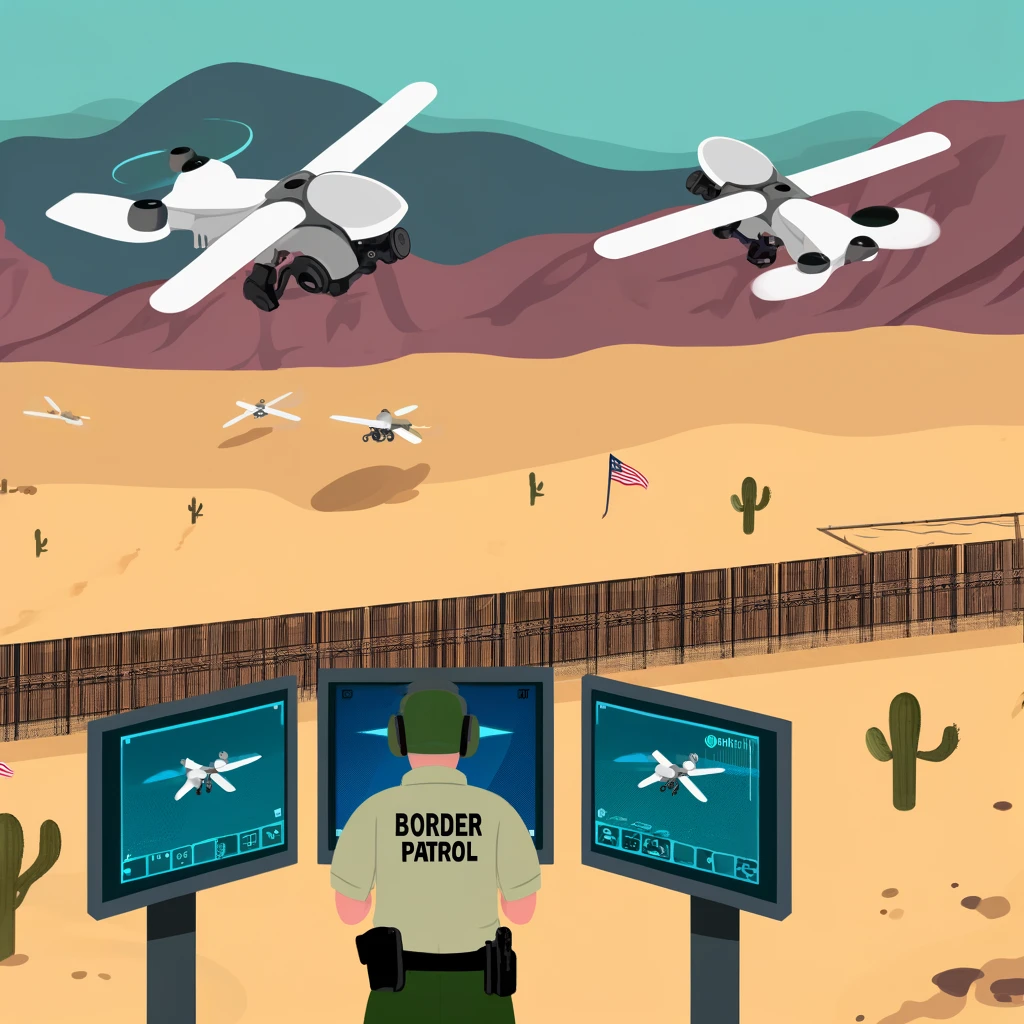
The use of Unmanned Aerial Vehicles (UAVs), commonly known as drones, along the southern U.S. border represents a modern approach to an age-old problem: the management and control of the border to combat illegal activities and regulate migration. These sophisticated machines have been deployed to surveil vast stretches of difficult terrain, providing border agents with a birds-eye view that is invaluable for monitoring and enforcement actions.

Drones are particularly effective in border surveillance for several reasons. Firstly, they can cover large areas that are otherwise inaccessible to patrol vehicles or agents on foot. This is crucial in regions like the deserts of Arizona or the remote areas of Texas where the harsh environment challenges human endurance. Secondly, equipped with high-resolution cameras and night vision capabilities, drones can detect movements discreetly and relay real-time data to ground teams. This technological edge is vital for border security, which often operates in the domain of fast-paced and clandestine activities.
The presence of drones along the border is a response to a range of security concerns, from illegal immigration to the trafficking activities of drug cartels. Cartels, known for their relentless innovation in smuggling methods, present a persistent threat. They exploit the border’s permeability to transport narcotics, weapons, and even people, orchestrating their operations with a brazen disregard for national laws. Drones contribute to dismantling these operations by tracking smugglers, intercepting drug shipments, and providing evidence to support legal action against these groups.


For migrants, the border is a beacon of hope, the final hurdle in their quest for a better life. However, their journey is fraught with danger, not only from the environment but also from the possibility of being exploited by human traffickers. While drones are not a panacea for the humanitarian aspects of border crossings, they can be instrumental in search and rescue operations, locating lost or injured individuals who might otherwise succumb to the elements.
The politics surrounding UAV deployment at the southern border are complex and often contentious. Proponents argue that drones are a cost-effective means of augmenting border security without the need for a continuous physical barrier. They underscore the technology’s success in reducing the number of illegal crossings and enhancing the Border Patrol’s capacity to apprehend offenders. Opponents, however, raise privacy concerns, fearing that surveillance may extend beyond the border and infringe upon the rights of American citizens. Others critique the efficacy of drones, pointing to the high costs and questioning whether these resources could be better utilized in addressing the root causes of migration.
Furthermore, the politics of drone use are entangled with the broader discourse on immigration policy and border security. Questions linger about the balance between ensuring national security and upholding America’s historical ethos as a land of opportunity. As administrations change, so too does the rhetoric and policy regarding border security. The utilization of drones, thus, is not only a matter of technological capability but also one of political will and the prevailing vision for America’s role as a neighbor and global actor.
In conclusion, the deployment of UAV drones along the southern U.S. border is an intersection of technology, policy, and human narratives. While they offer enhanced capabilities in monitoring and law enforcement, their use is a subject of multifaceted political debate that reflects the tension between securing borders and the humanitarian imperative of migration. As such, drones will remain a focal point in the continuing discussion on the best way to manage and protect the boundaries of a nation in a complex and interconnected world.
Images of a UAV drone designed for surveillance, which could complement your article about drone use at the southern border. The drone is depicted with a high-tech design, ready for patrol.
Illustration that captures a dramatic and tense scenario at the southern US border. The image conveys the sense of crisis and complexity of the situation.
Images illustrating UAV drones being used for surveillance over the southern US border. These visuals can complement your article on the use of advanced technology in border enforcement.